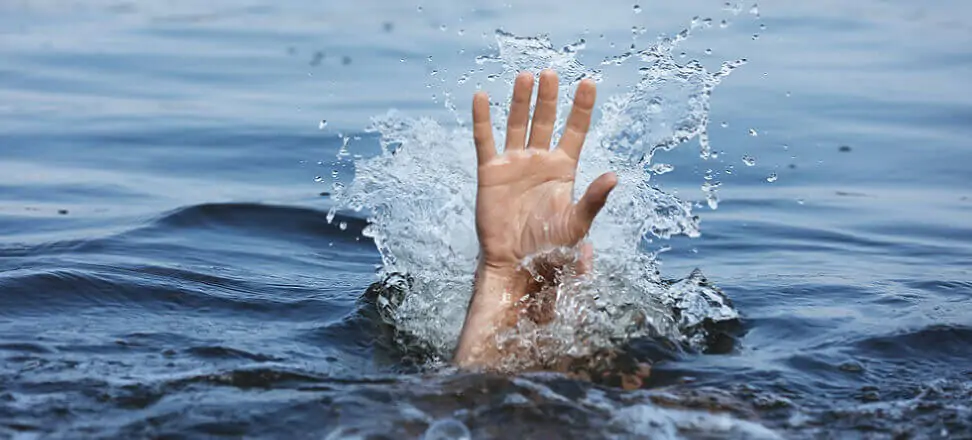Issue 14/2024, News
Water safety – anyone can drown, no one should
Drownings are among the most common causes of accidental death worldwide, especially in summer, when many people are relaxing by the water. The latest figures from the World Health Organization (WHO) show that annually about. 236 thousand. people, meaning that on average every 2 minutes someone loses their life in the water. In Poland alone, 176 drowning deaths have already been reported since the beginning of the year, underscoring the seriousness of the problem. Today’s World Drowning Prevention Day focuses on raising global awareness of the risk of drowning and promoting effective prevention strategies around the world.
World Drowning Prevention Day
World Drowning Prevention Day was established by the United Nations General Assembly in April 2021. The initiative aims to draw attention to the growing number of drownings and the need for global action to reduce them. In 2023. The World Health Assembly has adopted its first-ever resolution on drowning prevention, committing member states to implement effective prevention strategies and coordinate efforts at the international level.
Recommended preventive measures
WHO and local public health organizations are promoting six key interventions that can significantly reduce the risk of drowning:
- Training bystanders in safe rescue and CPR.
- Establish and enforce regulations for safe shipping, maritime and ferry transportation.
- Improving flood risk management at the local and national levels.
- Installation of barriers to restrict access to water.
- Provide safe places away from water for preschool children.
- Teaching basic swimming skills and water safety to early school-aged children.
A global problem
Drownings affect people of all ages, but the highest risk is among children and adolescents. In the 1-14 age group, drownings are the second most common cause of injury-related death. Statistics show that worldwide, boys and men are particularly vulnerable – they account for as much as 80 percent. of victims. In low- and middle-income countries, drowning rates are alarmingly high, often caused by lack of access to safe swimming areas and insufficient education about water safety. More than 90 percent. Drownings occur in rivers, lakes, wells and domestic water tanks.
Statistics of drownings in Poland
Every year in Poland, drownings take a deadly toll, affecting about half a thousand people. Most victims are adult men who overestimate their swimming skills – they account for 80 percent. of all cases. This year, up to July 20, there have already been 176 cases of drowning, of which 52 occurred in June and 61 in July. In previous years, the numbers were also high: 450 drownings in 2023 and 419 in 2022, up from 408 cases in 2021. Analysis of the data shows that while the number of drownings in Poland fluctuates, it remains at an alarmingly high level.
Why anyone can drown: causes of risk
Drownings result from a number of factors that can occur alone or in combination. The most common causes of drowning include lack of swimming skills, lack of proper supervision, alcohol consumption, bathing in unguarded areas and adverse environmental conditions.
Lack of swimming skills is one of the key risk factors. People who cannot swim are much more likely to drown, especially in situations where they find themselves in the water accidentally. Inadequate supervision, especially of children, is another cause of accidents, especially among children can fall into the water in the blink of an eye. Therefore, the constant presence of adults is essential to prevent tragedy.
Alcohol consumption also increases the risk of drowning. Alcohol impairs motor skills, impairs judgment and reactions to danger, which can lead to accidents in the water both while swimming and while on boats.
Swimming in unguarded places, such as rivers, lakes and open bodies of water at sea, is associated with a higher risk of drowning due to the lack of lifeguard supervision, making it significantly more difficult to intervene quickly in life-threatening situations. The problem is particularly pronounced in low- and middle-income countries, where the scarcity of safe, guarded swimming areas contributes to an increase in tragic accidents. Also, strong currents, low water temperatures or sudden changes in the weather pose additional risks to those using bodies of water.
Preventing drowning requires a comprehensive approach, including intensifying educational activities, promoting swimming lessons, increasing the availability of lifeguard supervision and developing infrastructure to ensure safety during water recreation. Only through integrated action in these fields will it be possible to effectively reduce the number of accidents and increase safety on the water.

 Polski
Polski







